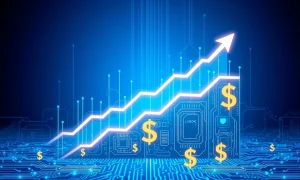Corporate America just shattered all previous records as stock buybacks surged past the $1 trillion mark at an unprecedented pace. This massive capital deployment signals a fundamental shift in how companies prioritize shareholder returns.
Understanding the Stock Buybacks Phenomenon
Stock buybacks represent corporate decisions to repurchase outstanding shares. Companies execute these transactions for multiple strategic reasons. The current acceleration reflects several key market conditions. Record corporate profits have created substantial cash reserves. Many organizations prefer returning capital to shareholders rather than making new investments.
Drivers Behind the Record Stock Buybacks
Several factors contributed to this historic surge in stock buybacks. Strong corporate earnings provided ample cash flow. Favorable tax policies encouraged capital returns. Additionally, low interest rates made borrowing for repurchases attractive. Market confidence also played a crucial role in this trend.
Impact of Massive Stock Buybacks
The trillion-dollar stock buybacks movement affects various market participants. Shareholders typically benefit from increased earnings per share. However, critics argue these funds could support long-term growth initiatives. The practice also influences stock price stability and market liquidity.
Future Outlook for Stock Buybacks
Market analysts monitor several indicators for future stock buybacks trends. Interest rate changes could affect borrowing costs for repurchases. Regulatory developments might influence corporate strategies. Economic conditions will continue shaping boardroom decisions about capital allocation.
Frequently Asked Questions
What are stock buybacks?
Stock buybacks occur when companies repurchase their own shares from the marketplace, reducing outstanding shares and increasing ownership percentages for remaining investors.
Why do companies execute stock buybacks?
Companies use stock buybacks to return excess capital to shareholders, support stock prices, improve financial ratios, and optimize capital structure.
How do stock buybacks affect shareholders?
Stock buybacks typically increase earnings per share and can boost stock prices, though they may reduce funds available for dividends or growth investments.
Are there risks associated with stock buybacks?
Potential risks include reduced investment in innovation, increased corporate debt if funded through borrowing, and possible market manipulation concerns.
How do stock buybacks compare to dividends?
Unlike dividends that provide immediate cash returns, stock buybacks offer capital gains potential and tax advantages for long-term investors.
Will stock buybacks continue at this pace?
Future stock buyback levels depend on corporate profitability, interest rates, regulatory environment, and economic conditions affecting business confidence.








